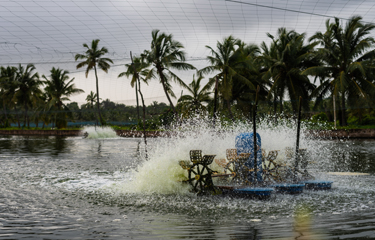India is the fourth-biggest seafood exporter in the world, but its government wants to do better.
According to Union Minister of State for Commerce and Industry Som Parkash, India’s government has prioritized the goal of making India the world’s top seafood exporter.
Speaking at the 22nd India International Seafood Show, Parkash said the government has made a commitment to support the seafood sector to achieve its goal of growing exports, The Press Trust of India reported 8 February. Parkash said “a plethora of problems” had been holding back India’s seafood sector, but assured those in attendance the government will seek to eliminate roadblocks hindering growth.
"Whatever problems you have, the government is ready to address them," he said.
The sector, which provides employment to about 14.5 million people, could contribute even more to the country’s overall economic development, Parkash said.
Parkash said he had asked the Marine Products Export Development Authority (MPEDA), India’s seafood trade body, to prepare and submit a memorandum listing the sector’s requirements for achieving growth. He said the government would seek to address them without compromising product quality or the environment, but warned India’s seafood sector would have to work “very hard” to achieve the goals laid out by the government, especially in light of the ongoing economic slowdown in the country.
At the show, which took place from 7 to 9 February in Kochi, India, Parkash and other government officials – including Kerala Fisheries Minister J Mercykutty Amma – granted awards to 60 companies and individuals in the seafood industry.
Also speaking at the event, Kerala state Governor Arif Mohammad Khan said India’s overall share of the global seafood market is expected to go from 4.1 percent to 6.7 percent by 2030 thanks to promoting production, value addition, and diversification, The Economic Times reported 7 February. Both directly and indirectly, approximately 40.5 million people in India are involved in the fisheries sector, which contributed one percent to the gross domestic product of the country.
Khan called for more foreign direct investment into the sector to drive innovation in product diversification and value addition.
However, in order to meet the goal of achieving INR 1 trillion (around USD 14 billion, EUR 12.8 billion) in value by 2025 – a doubling of the sector’s 2019 value of INR 500 billion (USD 7 billion, EUR 6.4 billion) – India’s seafood sector also already made its needs known, according to Seafood Exporters Association of India (SEAI) national president Jagdish V Fofandi. India’s seafood trade to the European Union and Japan has been limited by additional inspections and auditing implemented by food safety regimes there. In Europe, for example, India’s seafood exports are subject to extra testing for a wider range of antibiotic contaminants, after European Commission inspectors discovered deficiencies in food safety control at the production level in the South Asian country.
The U.S., the top of buyer of Indian shrimp, banned exports of wild-caught shrimp from India because they are caught without the use of turtle excluder devices, even though endangered turtles are typically not found in areas where shrimp is caught, along India’s west coast. China, another growth market for seafood from India, is also applying strict inspection and control measures to consignments from India.
Fofandi recommended that Prime Minister Narendra Modi discuss the issue during his upcoming visit to the European Union, and added he believed the government should send delegations to all major export markets where Indian seafood is facing issues.
Meanwhile, India’s government has prioritized the fisheries sector in its 2020 annual budget, setting the target for fisheries production at 20 million metric tons (MT) by 2022-2023, News 18 reported 1 February.
That would represent an increase of 50 percent from 13.34 million MT in 2018-2019.
India’s fish production rose nearly 6 percent to 13.34 million MT in 2018-2019, up from 12.59 million MT in 2017-2018, according to a letter sent by Minister of State for Fisheries, Animal Husbandry, and Dairying Pratap Chandra Sarangi to Shobha Karandlaje, a Member of Parliament in Lok Sabha – the lower house of India's bicameral parliament.
The country’s total fisheries production has been steadily increasing recently. It was 11.43 million MT in 2016-2017, and 10.26 million MT in 2014-2015, The Hindu BusinessLine reported.
Andhra Pradesh was the top state in fish production, with 3.99 million MT in 2018-2019 – up 16 percent from 3.44 million MT in 2017-2018. It was followed by West Bengal, with 1.77 million MT, up 1.7 percent from 1.74 million MT in 2017-2018.
Photo courtesy of Lloyd Vas/Shutterstock







